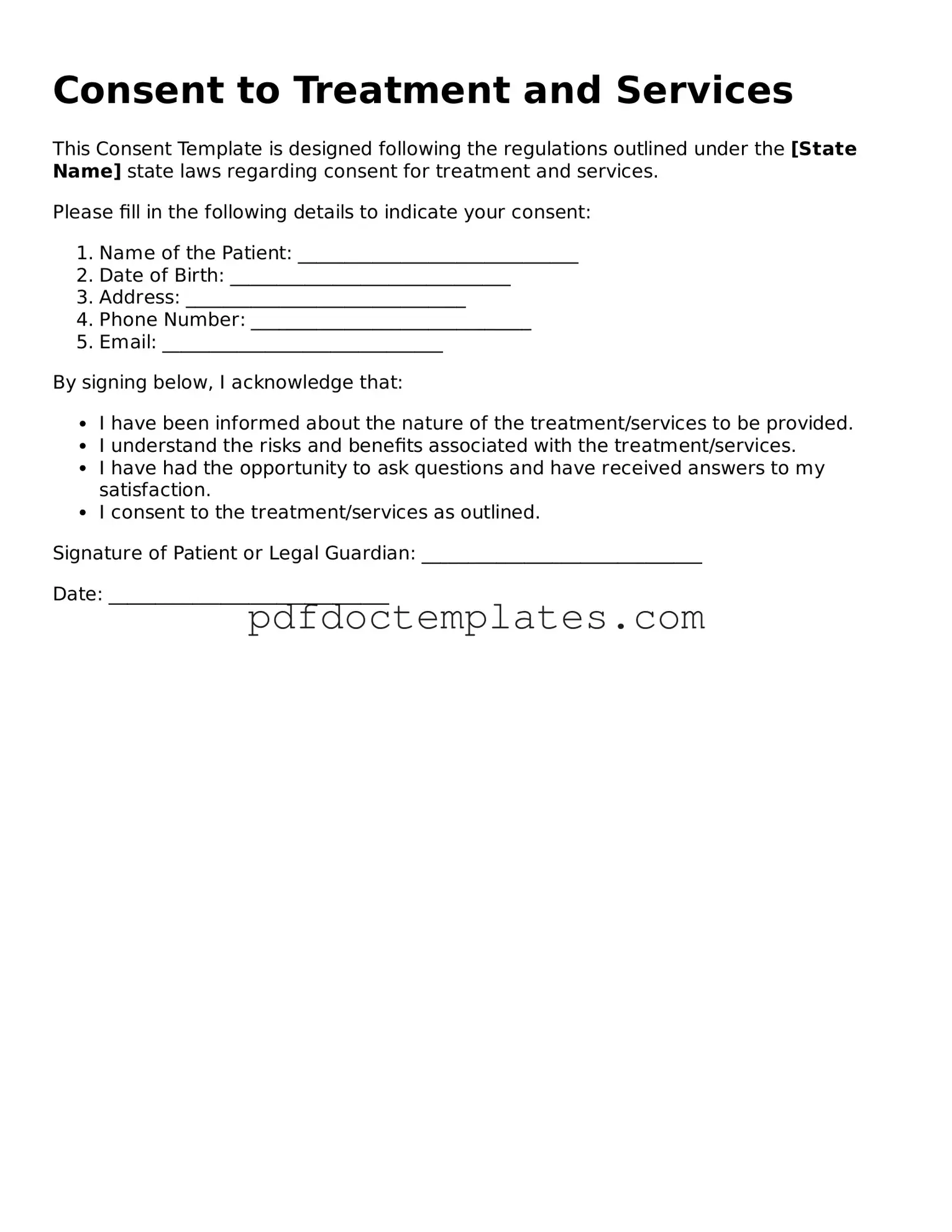Consent to Treatment and Services
This Consent Template is designed following the regulations outlined under the [State Name] state laws regarding consent for treatment and services.
Please fill in the following details to indicate your consent:
- Name of the Patient: ______________________________
- Date of Birth: ______________________________
- Address: ______________________________
- Phone Number: ______________________________
- Email: ______________________________
By signing below, I acknowledge that:
- I have been informed about the nature of the treatment/services to be provided.
- I understand the risks and benefits associated with the treatment/services.
- I have had the opportunity to ask questions and have received answers to my satisfaction.
- I consent to the treatment/services as outlined.
Signature of Patient or Legal Guardian: ______________________________
Date: ______________________________
